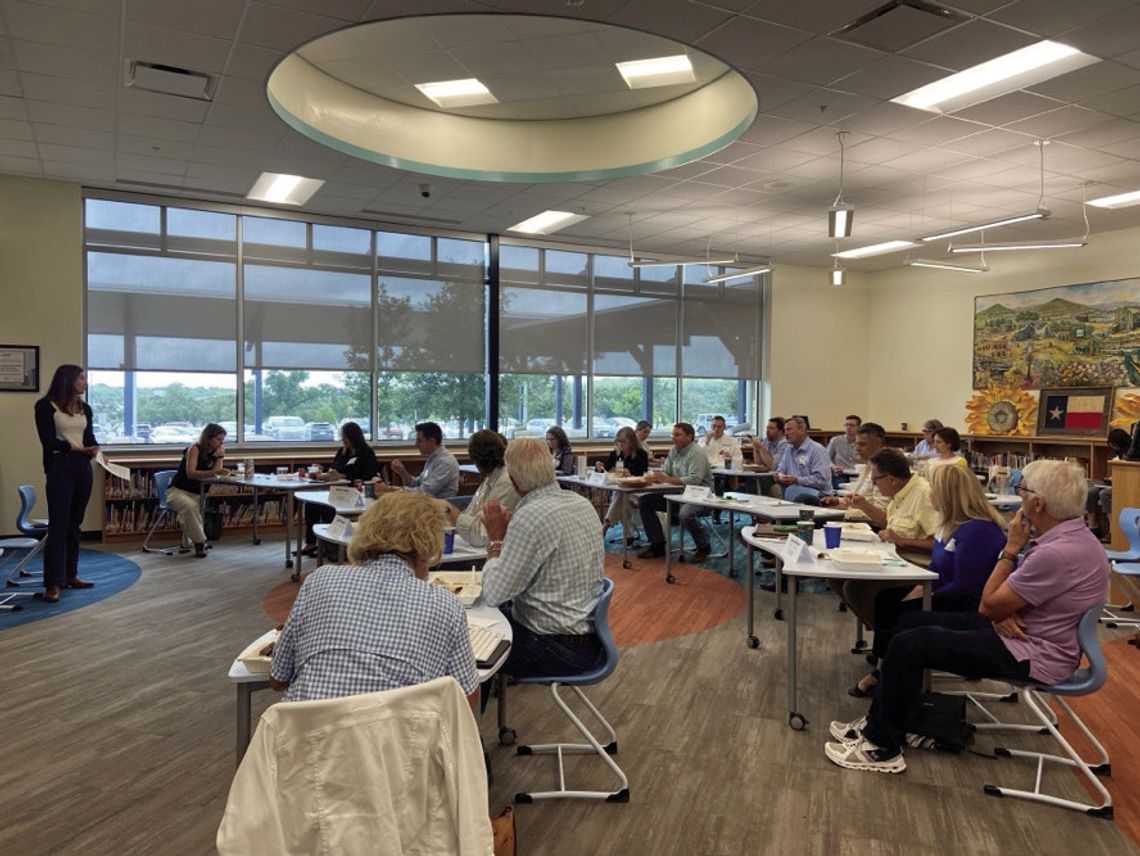With a growing population, increasing demand on water resources, and recurring drought conditions, community leaders from across the Hill Country are thinking hard about how to manage growth while protecting our water supply. That was the focus of the conversation of a recent gathering of the Hill Country Leadership Institute, a program of the Hill Country Alliance.
“The issue that we’re addressing isn’t one that’s in the future – we’re in it now,” stated Mason City Commissioner Robert Rayburn, at the June 20 meeting of the Hill Country Leadership Institute in Wimberley.
The Institute meeting brought together more than two dozen Hill Country city and county elected officials, staff, groundwater conservation district managers and community leaders at Wimberley’s Blue Hole Primary School last week. Throughout the daylong session speakers discussed innovative water conservation strategies, hurdles to implementation, and the need for more collaborative approaches to managing limited water resources.
The venue itself served as the centerpiece of the program’s discussion. Blue Hole Primary is renowned as Texas' first One Water school, using more than 60% less potable water than nearby Jacob’s Well Elementary. Opening to students in the fall of 2020, the school was engineered with water conservation at its core. A tour of the facility spotlighted features including dual plumbing for potable and non-potable water uses, pervious paving, rainwater harvesting, AC condensate collection and on-site sewage treatment and dispersal.
'What if instead of only thinking of growth as an increase in demand on water resources, we start to think of growth as creating new sources of water?' remarked Sharlene Leurig, CEO of Texas Water Trade. 'Innovative practices like harvesting AC condensate and rainwater, coupled with wastewater reuse for non-potable purposes, offer significant conservation potential.'
Throughout the day, numerous speakers and experts spotlighted these water management strategies, collectively referred to as “One Water” approaches, and gave examples from around the Hill Country. In addition to innovations at the building scale, cities and utilities across the region are increasingly considering how to maximize the conservation of water resources by working collaboratively across departments and agencies. New funding available from state and federal sources makes this a “golden age of funding” for rural and underserved water systems, according to Bill Moriarty, an independent consultant specialized in securing funding for water infrastructure projects.
In New Braunfels, these efforts have culminated in the creation of the collaborative One Water New Braunfels program, agreed to last fall by the City of New Braunfels, New Braunfels Utilities, and the Guadalupe-Blanco River Authority. As all three agencies look ahead at future water supply constraints and opportunities, the partnership allows more effective collaborative management of water resources to safeguard watersheds, waterways and groundwater, according to Robin Gary, One Water Coordinator at New Braunfels Utilities. “In many regards this level of coordination is unique - not only in Texas, but across the country,” said Gary. “Collaboration across departments and across agencies is critical. The waters of the Hill Country support our economies, environment, quality of life, and our future. We have to work together to make sure our waters remain celebrated, sustainable, and protected features of our community for generations.”
.png)











